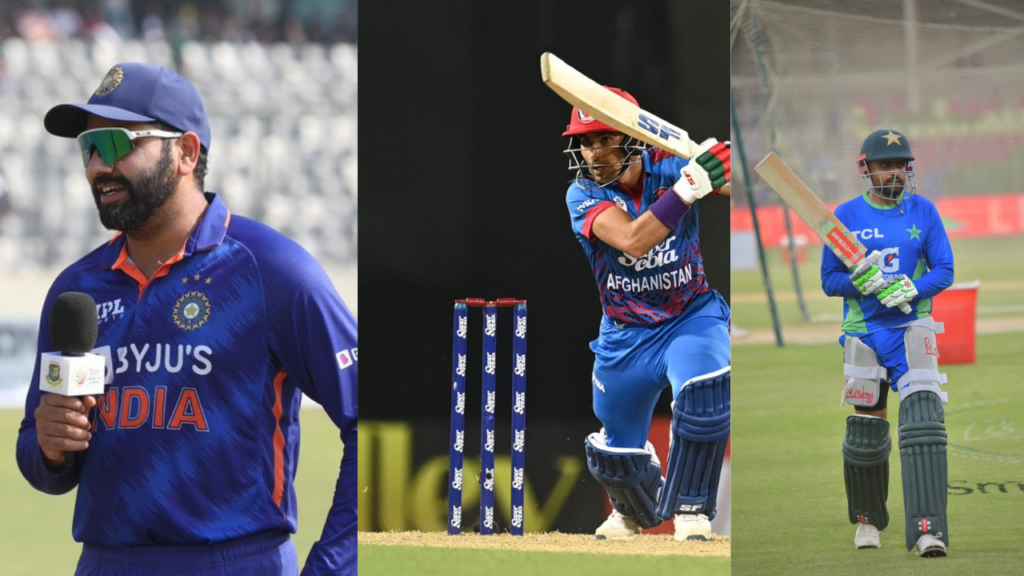
Afghanistan: The Hashmatullah Shahidi-led side, placed in Group B, will believe they have the tools to progress to the Super Fours. In the second round, it would be more about absorbing the pressure and seizing the crucial moments. With Jonathan Trott as the coach, Afghanistan’s batters seem to be playing with a bit more method. In the recently concluded ODI series against Pakistan, Rahmanullah Gurbaz and Ibrahim Zadran, the openers, showed enough evidence of it by sharing an alliance of 227. Ultimately, Afghanistan finished with a score of 300 on the board.
Even in the ODI rubber versus Bangladesh, the duo put on an association of 256. Last year, too, Gurbaz had cracked a ton versus Bangladesh. The middle order, however, looks shaky. Rahmat has compiled a solitary ODI fifty this year, while Najibullah Zadran, their designated finisher, has none to his name in 2023. Shahidi, the skipper, too, has been rather under-par this year.
Just like before, Afghanistan’s trump card will again be their spin resources – Rashid Khan, Mohammad Nabi, Noor Ahmad and Mujeeb Ur Rahman would be expected to shine on slower wickets in Lahore. Although, on occasions, the dew factor has played its part in places like Lahore and Karachi. Rashid and Nabi would also be expected to provide some heft to the batting down the order.
In that context, the return of Karim Janant to the ODI squad would mean Afghanistan also have enough seam-bowling all-rounders in their arsenal. Gulbadin Naib is the other pace-bowling all-rounder.
Meanwhile, the talented Fazalhaq Farooqi will spearhead the pace attack. Although Abdul Rahman, one of his pace colleagues, seemed to be struggling a bit with the direction of his non-bowling arm in the series versus Pakistan.
Pakistan: Pakistan would have ambitions of going all the way. The top order is functioning well while the pace bowling unit looks lethal. Pakistan also have enough depth in their batting. More importantly, Pakistan seem to be playing collectively as a unit, something that you don’t always expect from the Asian giants. Simply put, they seem to be in a good space at the moment.
At the top of the order, Babar Azam, Fakhar Zaman and Imam-ul-Haq all have enviable records in the ODI format. This year, Fakhar even notched up three hundreds in a row in this format, although it came against a second-string New Zealand side. Mohammad Rizwan is the bedrock of the middle order while Agha Salman has built up a reputation of being a fine player of spin. Saud Shakeel’s addition to the squad further strengthens the batting line-up.
Pakistan’s middle order did suffer a wobble or two in the series versus Afghanistan. Just that even if the middle order doesn’t pull its weight, they still have the likes of Mohammad Nawaz and Shadab Khan to make an impact lower down the order. Shaheen Afridi and Naseem Shah, the pace-bowling duet, can also land the big shots. The last two names mentioned would also lead the pace attack.
Naseem can swing it both ways and summons some quick spells. Alongside generating some movement, Afridi has another string to his bow – the left-arm angle. With Pakistan possessing the raw pace and hit-the-deck skills of Hari Rauf, they seem to have most of the bases covered in that department.
India: The seven-time Asia Cup champions would also have high ambitions of clinching the title. Although a few bottlenecks may still hinder the side through the course of the tournament. One of them is the middle order. It is true that Shreyas Iyer seemed to have made the number four slot his own. However, just when India seemed to have found the right piece to fill the tricky jigsaw puzzle, Iyer suffered a back injury.
The middle order bat has returned to the set-up, but it could take a few games for him to find his groove. During the tournament, enough eyes also would be zoomed in on whether the back problem is still giving him an issue or two while playing the horizontal-bat shots. Incidentally, before Iyer was laid low by the injury, he seemed to be getting better at cracking the pull. KL Rahul being ruled out of the first two games because of a niggle doesn’t help the cause either.
Ishan Kishan is the back-up wicketkeeper, but he has played just six ODIs and with little success in the middle order. So, would India risk playing Shubman Gill in the middle order? Logic says better to not disrupt something that is working well. Amid a few concerns, Virat Kohli, the lynchpin of the side, has been in excellent form in the last 8-9 months, evidenced by the three tons he has scored in ODIs during that period.
Rohit Sharma, Gill’s opening partner and the captain of the side, has a couple of fifty plus scores in ODIs this year. However, before the last World Cup, he seemed to be in another zone. As Rohit himself said to PTI in an interview: “I want to get into the phase I was in before the 2019 World Cup. I was in a great frame of mind and prepared really well for the tournament.”
Meanwhile, the pace bowling department seems to have enough firepower, with Jasprit Bumrah and Prasidh Krishna making a successful return from back injuries. India have also tried to lengthen the batting unit by picking Axar Patel alongside the ever-present Ravinder Jadeja. Kuldeep Yadav looks all set to lead the spin attack. In the last some months, the wrist spinner is imparting more revs on the ball.
Hardik Pandya and Shardul Thakur are the seam-bowling all-rounders. India have also gambled heavily by backing Suryakumar Yadav. The explosive batter has had a lot of success in the shortest format but in ODIs he seems to be finding it difficult to find the right tempo in the middle order.
Also Read: Hopes of New Hues in Asia Cup Assembly



